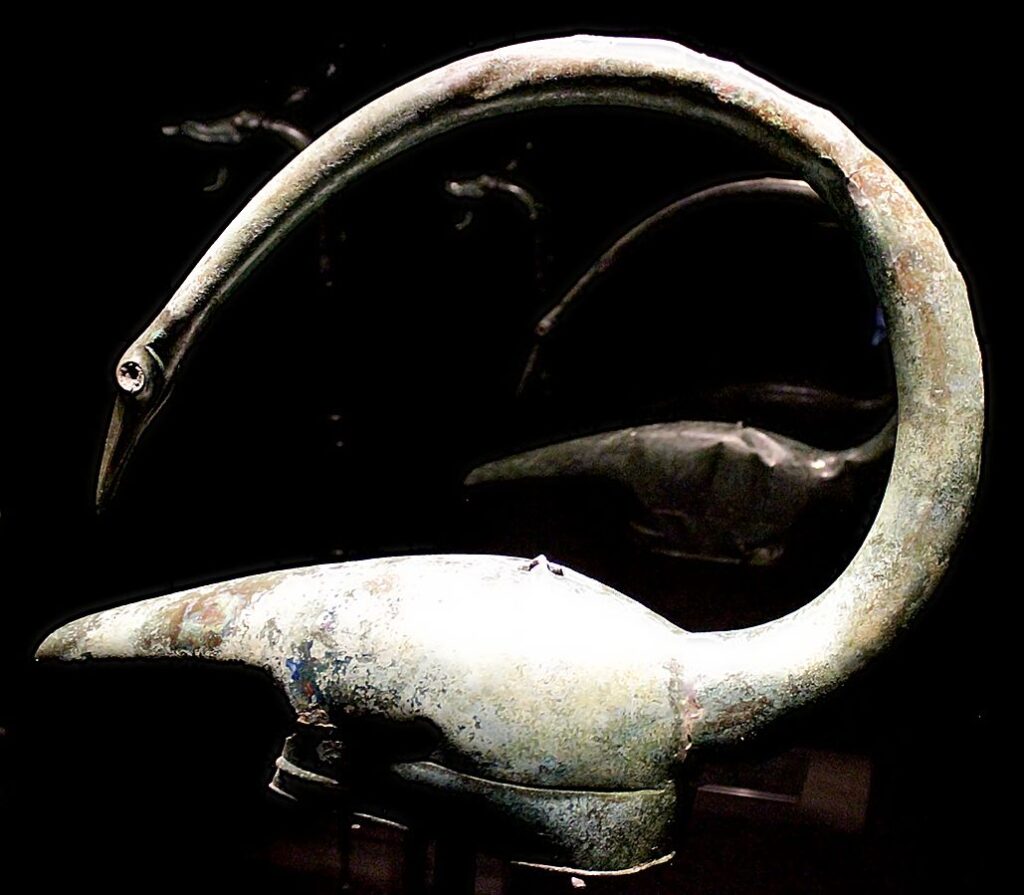
Mute swans, the commonest swan native to Northern Europe, are easily
identified by the black knob atop their orange beaks. Swans pair for life and return to the same
nest every year which they defend by hissing aggressively and chasing away
intruders, otherwise except for the odd grunt and hoarse whistle, they are mute as the name suggests, . I always imagined Swan was a homophone of watery words like Swim, Swiss and Splash, but I was wrong. Swan is derived from an Old Saxon word swan or suan, (Danish svane, Dutch zwaan, German schwan, Icelandic svanr and Swedish svan) which has its root Indo-European *swen or *swon (to sound, to sing). Thus “Mute Swan” encapsulates an image of the bird as mute singer.
Aesop,
6th century BCE, has two fables mentioning mute swans that would only sing
under duress, especially after they had been
threatened with death, and then they sang
beautifully. Hence the phrase Swan Song meaning something we do at the
end of our careers before we retire or die. It seems that these ancient stories about reluctant (mute) singing
swans are very old. Looking on Google it seems to me that there is compelling evidence to
suggest that ancient cultures mentally matched the necks of swans with
the shape of their bronze age trumpets called lures (lurs).

These lurs appear on Scandinavian rock carving from 1000 BCE.
Norse rock carvings with swan necked lures
The Celts, who appear a few hundred years later, used to carry lur like trumpets with animal heads into battle.

Although Celtic lurs with swan heads have not been found there is one Celtic helmet that looks like a lur with swan’s head.

Is this the song of the Swan?
In Roman times, after the Celts had been defeated, Pliny seems quite angry about the stories of singing swans. In his Natural Historie he tells us “some say swans sing a mournful song before they die, but this is false, judging from experience. Swans are cannibals,and eat one another’s flesh.“
But Pliny’s words fell on deaf ears, 500 years later Isidore of Serville is still telling stories that swans “singing is sweet because it has a long, curving neck”. Another 500 years later Bartholomaeus Angelicus is again mentioning that swans “hath a long neck diversely bent to make divers notes” and adding news about a fabulous country where “it is said that, in the countries that are called Hyperborean, the harpers harping before, the swans’ birds fly out of their nests and sing full merrily”
A millennium later the meme connecting swans, death and beauty (this time dancing for salvation rather than singing) was still being promoted by classical ballet; most famously in the solo piece “The Dying Swan” and again in the final act of Swan Lake where a swan maiden dies to release herself from the curse of the evil Von Rothbart. On a more optimistic note swans are symbols of flourishing beauty, most famously in the tale of the ugly duckling that unknowingly grows into a beautiful swan. A particularly lovely idea can be found in Indian Mythology where swans are symbols of unworldly, untouchable beauty because when you put their feathers into water they remain dry and do not absorb water.
Two Bad Mice have reproduced the image above as a greeting card
